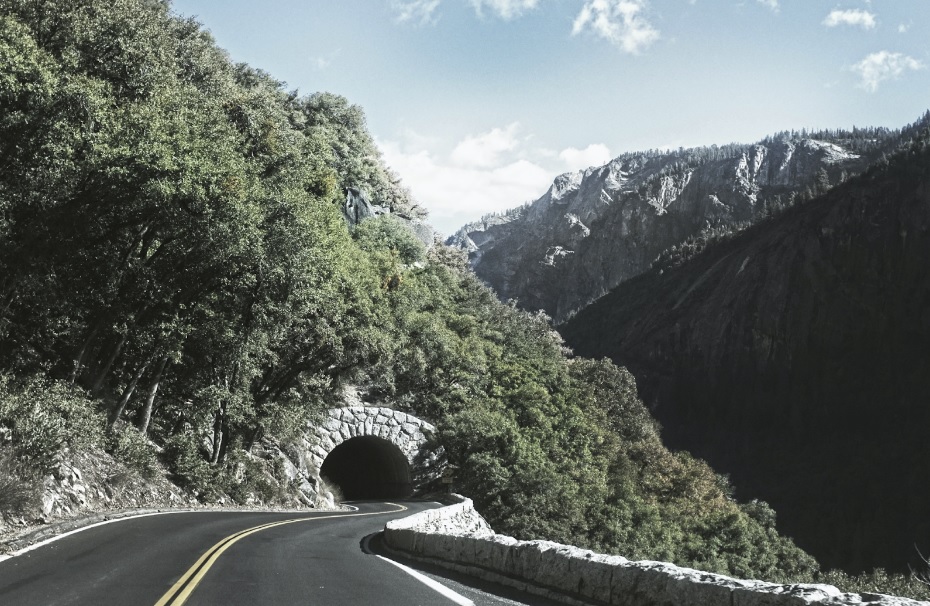
Unlocking the Wonders of The San Bernardino Tunnel: A Journey Through Switzerland’s Alpine Marvel
Nestled high in the towering Swiss Alps lies an engineering marvel that has connected southern and northern Europe for over 200 years. Stretching 5.7 miles through solid mountain rock, The San Bernardino Tunnel is a testament to man’s ingenuity in conquering nature to traverse the impenetrable.
Built-in the early 1800s entirely by hand, the tunnel has borne witness to the passage of everything from Napoleonic troops to modern freight trains. Today, it captures the imagination of travelers eager to unlock its secrets and tick off their bucket lists. Join me as we journey through the ages and emerge on the other side with a glimpse of The San Bernardino Tunnel’s rich history.
Early Attempts to Cross the Alps
Since ancient times, the mighty Alps have presented a near-insurmountable barrier separating northern and southern Europe. Trade routes passed East and West of the mountains, bypassing Switzerland despite its central location on the continent. Traversing the skies and valleys for centuries meant risking life and limbs through snow, ice, rock falls, and wild animals.
Early Roman incursions identified key mountain passes but remained seasonal and perilous. As medieval kingdoms emerged, control of Alpine passes became strategic. By the 13th century, the Gotthard Pass linked central Switzerland to Italy through a narrow rock gorge flanked by snow-capped peaks. Still, trade and transport were at the mercy of the elements on the Gotthard route.
The Turning Point – Napoleon’s Grand Plan
The late 1700s saw a renewed ambition to tame the Alps’ wilderness year-round. France feared invasion from northern powers after the Revolution. Military leader Napoleon Bonaparte saw easier access over the Alps as an offensive strategy. His experience crossing the Great St Bernard Pass cemented his desire for a stable trade and transport link.
In a radical move, Napoleon’s Chief Engineer proposed boring a tunnel straight through Switzerland’s St Gotthard Massif. After an exploratory foray, engineers declared that using only chisels, hammers, and black powder was feasible. The San Bernardino route was chosen for its relatively narrow rock breadth and established Gotthard Pass access roads.
Against the Odds: Building the Tunnel by Hand
In June 1804, over a thousand laborers gathered at the base of the silent San Bernardino peaks, ready to tunnel into the unknown. For a dozen years, miners painstakingly hacked inch-by-inch using iron picks and gunpowder blasts. Hundreds died from rock falls, carbon monoxide poisoning, and diseases in the cold cramped shafts rarely five feet high.
Stiff opposition from locals who feared French invasion almost halted the ambitious dig. Napoleon himself closely followed progress as funds continually ran low. Finally, in late 1815, a tiny hole was breached between north and south, peaking excitement across Europe. Napoleon’s demise months before meant the inaugural crossing in 1818 was in peacetime by horseback.
How the San Bernardino Transformed Travel
In the years after its opening, traffic on the San Bernardino Tunnel route mushroomed, demonstrating its usefulness beyond armies. Stagecoaches from northern Germany could reach Italy, rapidly spurring tourism in both directions. Traders cashed in as customs stations sprouted to tax gains.
A weekly horse-pulled coach was soon replaced by daily diligences in 1834, further slashing travel times. By the late 1800s, over 1,300 coaches crossed annually, carrying nearly 1,500 passengers and freight. The days of treacherous high mountain passes seemed a distant memory.
As locomotive rail emerged, Switzerland competitively connected Frankfurt-Milan with the first rail tunnel by 1882. Although plagued by disasters like fires and avalanches early on, rail capacity through The San Bernardino Tunnel expanded massively by 1922. The original single track made way for sturdy double lines electrified to boot.
World Wars and Modern Times
Despite its peacetime origins, The San Bernardino Tunnel’s strategic location primely positioned it for both World Wars amid Europe’s rivalries. Its southern portal saw skirmishing on the Italian Front in World War II, while rail transport played a key logistical function in both wars for the country determined to remain neutral.
Following the tumultuous early to mid-1900s, the tunnel has enjoyed relative stability, keeping Switzerland’s rail network humming. In 1995, the San Bernardino line was incorporated into Swiss Federal Rail’s high-speed network, allowing rapid coast-to-coast transit today. It takes just over an hour to traverse the entire tunnel – a far cry from the early days trekking its dank, dark reaches for almost a day!
Why The San Bernardino Tunnel is an Engineering Marvel
It’s hard to comprehend how thousands of manual laborers worked 24 hours daily, sometimes only gaining a few centimeters, yet prevailed after 12 grueling years entirely by hand tools. They overcame deadly accidents, freezing temperatures, flooding, and financial crashes to doggedly do the task. The builders’ primitive surveying managed gradient differences just 30cm from the breakthrough point – remarkable accuracy for the tools available.
Considered one of the world’s first major mountain tunnels, the San Bernardino stands as testament to daring human ambition and perseverance. Its success spawned a tunneling boom, including the iconic Gotthard Base Tunnel straddling the same mountainous terrain today. The plucky little pioneer tunnel that could remains a crucial link actively ferrying tens of thousands under the Alps daily.
Visiting the Historic Tunnel
Part of The San Bernardino Tunnel’s mystique lies in its limited access today to maintain efficient rail services. However, Visitors can still experience history in the making thanks to public access to the disused original tunnel built under Napoleon. Located just west, the historic tunnel makes for an evocative excursion.
Sturdy shoes are a must to walk the damp railway ties, glimpsing how workers once toiled by candle glow alone. Eerie cave-ins housing memorials vividly recount disasters that snatched lives randomly. Graffiti scrawled by long-dead souls speaks across centuries. On busy days, one can wave at train passengers speeding through the adjacent tunnel, unaware of bygone heroics allowing their journey.
Emerging from the chilly darkness evokes the relief of early explorers witnessing the first light after endless digging. We can marvel at epic mountains in Switzerland that once obstinately blocked passage between lands and appreciate the lasting links made possible by visionary 19th-century tunnelers in this remote corner of the Alps.











